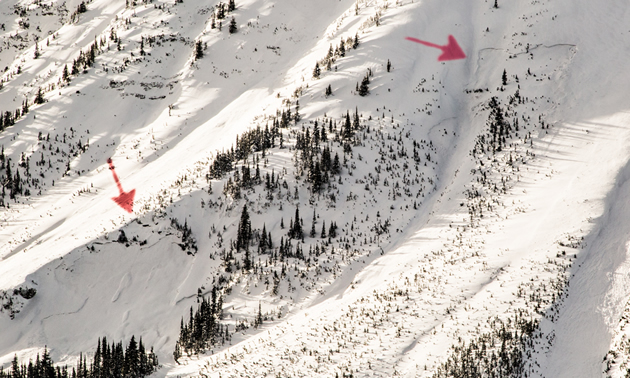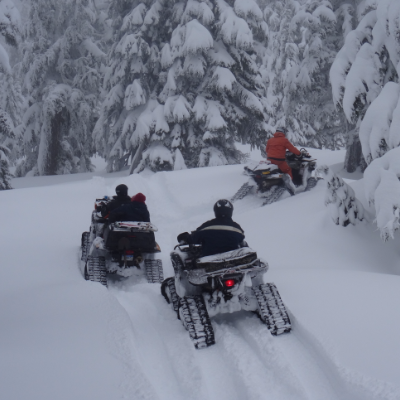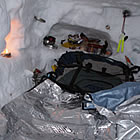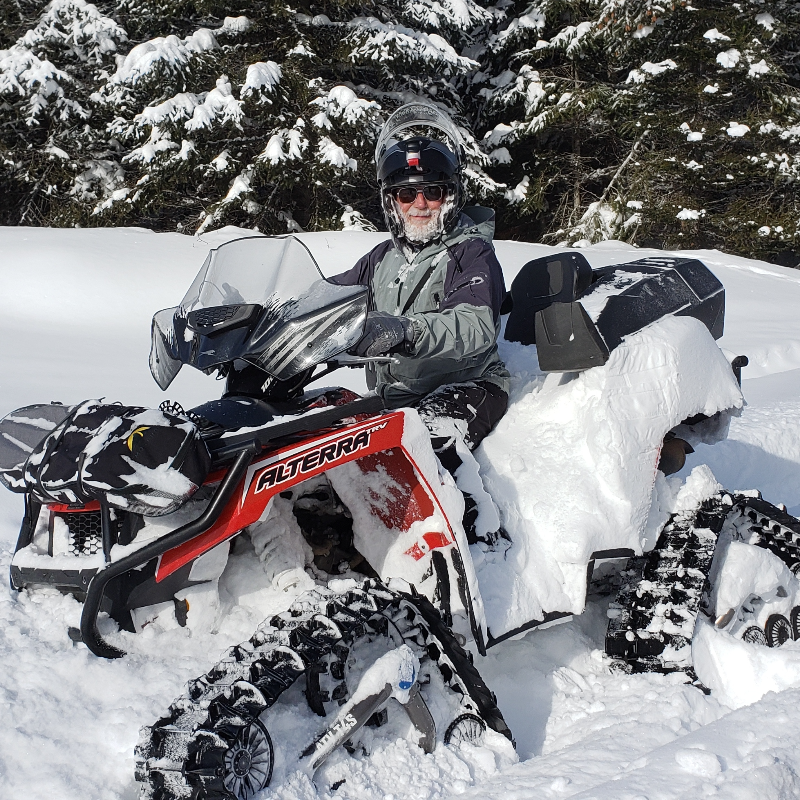“I feel like I’m calling my mom to tell her I just failed my test,” confessed a past Avalanche Skills Training Level 1 student who was recounting a very close call with a shallow, faceted Rockies snowpack.
This rider was quite embarrassed at the best practices that they let slide.
“I usually ride so aware,” this rider said. “I’m usually the one that helps coach others new to avalanche safety, but I just got caught up in the moment and before I knew it, the slope released and my heart skipped a couple beats.”
“Guess what?” I shared in the rider's shame: “I just did the same thing two days ago.”
No matter what your level of training, it is easy to let your guard down. Luckily for both of us, it was a powerful lesson that we walked away from—a little humbled but hopefully stronger and more aware.
The setting
Randy and I had been riding in similarly unstable conditions and had observed many warning signs. A number of steep, open slopes in the alpine and treeline had recently avalanched. Even a small avalanche had ripped out on a short, steep feature and dropped onto the logging road.
We stopped and exposed the snowpack layering in an extremely thin area (the total snow depth was less than 50 centimetres) and took photos of the well-developed depth hoar chains and facets that made up three-quarters of this particular snowpack. It truly was the most unstable base I had ever seen. The only saving grace was that in areas with no wind slab, the overlying snow was so unconsolidated that there wasn’t really a slab of cohesive snow capable of propagating a fracture very far, if at all.
From this point, the logging road had blown in with some drifts and we chose to do a bit of shovelling to level out the trail. It was too long to safely sidehill, as the drifted snow was not that forgiving and the downhill side was quite steep with a lot of trees. When we were almost through the dig, I made a comment: “We should have just dropped down into the valley and found a straight face to poke up through the trees.”
Considering the conditions, it was unbelievable that I actually said this. My mouth was engaged but not my brain.
Testing the snowpack
We travelled along this logging road until we came to an aspect that we were interested in. We dug a snow pit just over the bank from our snowmobiles on an aspect that was similar to some of the avalanches we had observed that day.
Upon exposing the pit, it was obvious that the faceted base layer was present.
In this area, however, the overlying slab was a bit thicker and more cohesive. We performed a quick extended column test by placing two probes 90 centimetres apart and 30 centimetres back from the front wall of the pit. A thin cord with several small knots was placed behind the probes and two of us see-sawed the cord down—not quite to the ground—to cut out this wide block of snow. The whole block released and dropped into Randy’s lap with a moderate result, just three taps from the elbow. The slope incline in our pit was 30 degrees. To see our extended column test, visit the Canadian Avalanche Centre’s Forecaster Blog.
One step in the wrong direction
As we were packing up to leave, a piece of our equipment skidded down the slope. It stopped around 10 metres down the slope, right between a couple of trees.
No problem, it would just take a few steps down the slope to retrieve it. One step and we all felt the whumph! A low but distinct rumble continued for another couple of seconds (it felt a lot longer) as the entire slope below us settled.
A whumph occurs when a slab tears apart and settles down onto a weaker layer below. The whumph noise is the air being forced out as the downward pressure of the slab crushes the faceted, sugary crystals and forces them closer together.
Needless to say, we froze and looked at each other, realizing the close call we'd just had.
From our snow pit, the slope rolled over to a much steeper angle of 45 degrees. It was very likely that the thick tree branches on the slope below had anchored the snow and stopped it from actually sliding.
Regardless, we recognized the close call for what it was. It is unlikely the snow pit area would have slid, but the area below us could have run.
What went right:
- We chose to be at the very top of the slope. There was no chance of avalanche snow above us.
- We chose the slope of 30 degrees rather than the steeper slope below.
- We had at least one person out of the pit for most of the time.
- Our rescue gear and snowmobiles were stashed on the logging road safely above the pit.
- There were trees a few feet below the pit wall. It may have been possible to grab a tree, as the slide would not have had much speed at this point.
What went wrong:
- We did not have a conscious conversation about safety when choosing the pit.
- We underestimated the seriousness of the steeper slope below the pit.
What we could have done differently:
- Chosen a pit on an even shorter slope.
- Chosen a pit on a lower angle and extrapolated the results to steeper areas.
- Made a conscious choice that one person stayed on the logging road above the pit.
- Considered belaying before stepping down over the convex part of the slope.
A powerful lesson
We are all pretty good at keeping our guard up on the “hillclimb hills” and when we are accessing obvious, large avalanche paths. It is so easy, however, to underestimate the potential of short, steep slopes or main travel routes on our way to the big hills.
We knew better but were a bit too hasty in our comments and actions. Perhaps we would have stopped ourselves before we'd actually passed the point of no return. How close we came we will never really know—all I know is the mountains gave us very quick and direct feedback and put us in our rightful place: respectful and humbled by nature’s power.
Please consider sharing a close call or other experience in the comment section below. We are all human. Mistakes happen, but it is in hindsight that the learning happens.







